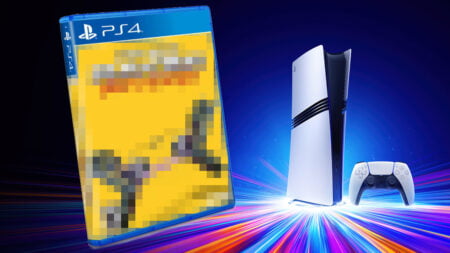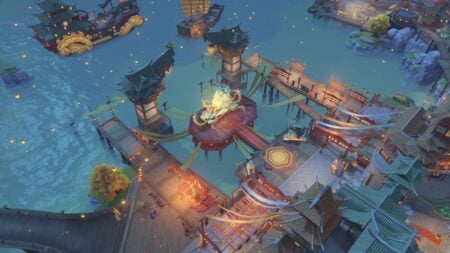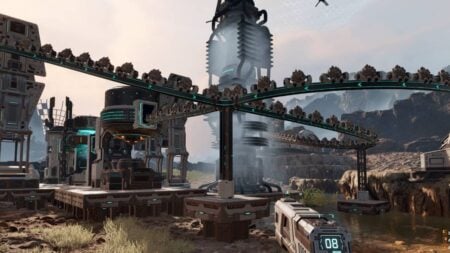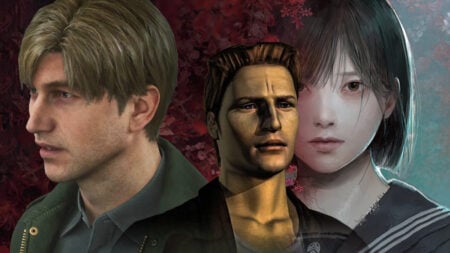Skip To...
Let’s face facts: Not every open world, content-rich game is going to be The Witcher 3. It was a title that combined a great story, plenty of content, excellent engagement and some solid graphics, but let’s not fool ourselves that it is anything other than an outlier. The Witcher and a modicum of other titles manage to keep us gripped every step of the way with unique content, never falling into a repetitious cycle; but more often than not, games have padding: Additions that are simply there to artificially inflate your playtime.
It’s poor game design, it’s disingenuous, and it adds nothing to the experience – in fact, it often detracts from it. As consumers, the power is in our hands: Isn’t it time we stopped supporting it?

Know Thy Enemy
How can you spot padding? Chances are, you’ve already experienced it. Ever felt like a game was just forcing you to repeat the same action over and over to progress? Perhaps you need to reach a certain level to continue the main story or complete a particularly boring mission or quest. Maybe the game world is enormous, but it’s also empty, acting as nothing but a large expanse between objectives to increase playtime through travel.
Sometimes it’s just a result of bad or rushed game design, but other times you can’t help but feel that it was put in there intentionally. After all, what is one of the main selling points of many open-world games? Playtime. We’re always looking for something else to consume, and more is always better. Hundreds of hours of gameplay! Thousands of different weapons! Millions of planets! We want to feel like we’ve got our money’s worth, and the more hours we can squeeze out of a game, the better.
Do the discarded rifles give away how many times the radiant quests have sent me here? pic.twitter.com/jCo3TMv5D8
— #IStandWithMyFeet (@jessemeixsell) July 29, 2016
It doesn’t seem to matter to us that, for some games, all that translates to is tens of hours of grind, repetitive content, and utter boredom. With titles like Skyrim running around, developers have to stand out from the crowd. A few dozen hours of gameplay is nothing now, you have to pad, pad, pad, even if that means creating more gritty gameplay than is strictly necessary. While there is still room for short and sweet experiences, and some open-world games manage to combine both well-crafted and lengthy into one complete package, it is hardly the norm.
The question that needs to be asked now is whether we want a good time or just a long time.
Room For One More?
That isn’t to say that there isn’t room for this kind of content. Borderlands did this very well, delivering on its promise of “bajillions” of guns without the player ever feeling like they are just experiencing the same content over and over. Skyrim, while it did have issues of repetitive dungeons, had a multitude of sidequests – though the “infinite quests” we were promised ended up just being the same thing in different locations: More padding. There are definitely shades of gray, but extreme examples demonstrate the issue more obviously.
Look at the discussion struck up around upcoming hype-machine No Man’s Sky. This open-universe, exploration-based sci-fi title boasts a number of planets in its virtual galaxy that rivals those of the real galaxy. Just watch the videos demonstrating the breadth of the play area; if true, it’s mind-blowing in scale. Such a feat couldn’t be accomplished directly by human design, so the developers rely on an algorithm instead. Stars, planets, solar systems, all generated through the power (magic, really) of random generation.

A Possible Padding Example
However, some have brought up an interesting point that not only applies to No Man’s Sky but games that drive towards expansiveness in general: It doesn’t matter if we have billions of planets if only a select few actually hold anything worthwhile. It’s the same issue as repetitive quests and gameplay, except this time the designer is a computer rather than a human being.
Oh look, another desert planet with the same desert-related stuff that we saw ten minutes ago. Oh look, another crazy creature that looks surprisingly similar to the one on that other tropical planet. It’s Spore all over again: It doesn’t matter how many unique assets you have, if you interact with them in pretty much the same way, then it’s padding.
It’s not just about repeating the same old fetch quests (of which many games are guilty of in some capacity), the gameplay itself can be repetitive too. That’s where many randomly-generated games fall over – they rely on the crutch of new and exciting scenarios and item, but don’t address the fact the gameplay is shallow. Looking at you, Elite: Dangerous.
More Isn’t Always More
The real question is how much content does a player truly need? How many planets do you think the average player is actually going to visit? Hundreds? Maybe even thousands? If a player is constantly having to search for something interesting in your expansive universe, hasn’t that defeated the point of the medium itself? Searching for fun in an open world game is certainly a delicious irony but leaves a nasty taste in the back of my throat nonetheless.
[embedyt] https://www.youtube.com/watch?v=7AVmI73va4g[/embedyt]
[gap height=”15″]
Of course, one of the main themes of No Man’s Sky is the enormity of the thing – you aren’t supposed to be able to see the whole universe, endless content is one of the main points of the title. You wouldn’t fault a mystery film for hiding things from the audience, after all. In addition, there is the extremely obvious fact that it has not yet been released, and until recently there were very few details on the game as a whole.
In that respect, this is all speculation – you never know, they may be able to make every single one of those quintillion planets interesting in some way. It would be a masterful stroke to be able to do so, but not impossible. Far more likely, in my opinion, is some level of padding. Perhaps I’m wrong (I hope I am), but that’s what my instinct tells me when there is so much focus on just quantity of play.
Demand Better, Not Excess
What’s the ultimate message here? Much like I’ve said before with the death of the tutorial, the destruction of surprise in gaming and even the graphical obsession that people seem to have, content inflation is a result of the industry trying to sell a product. If all you know about two games is that one is 100 hours long, and the other is 50, which are you going to pick if they are the same price?
This leads to content for the sake of content; or rather, content for the sake of content length. There’s plenty of ways to use the open world, random generation or other content-rich methods, but they have to have a reason for existing beyond the grind. Too often, we are promised hundreds of hours of gameplay, but the reality is that a lot of these hours are spent experiencing the same thing over and over again.
Stop enabling this kind of behavior. Demand something more than padding. Look beyond the hours of gameplay, and focus on quality instead of quantity.







